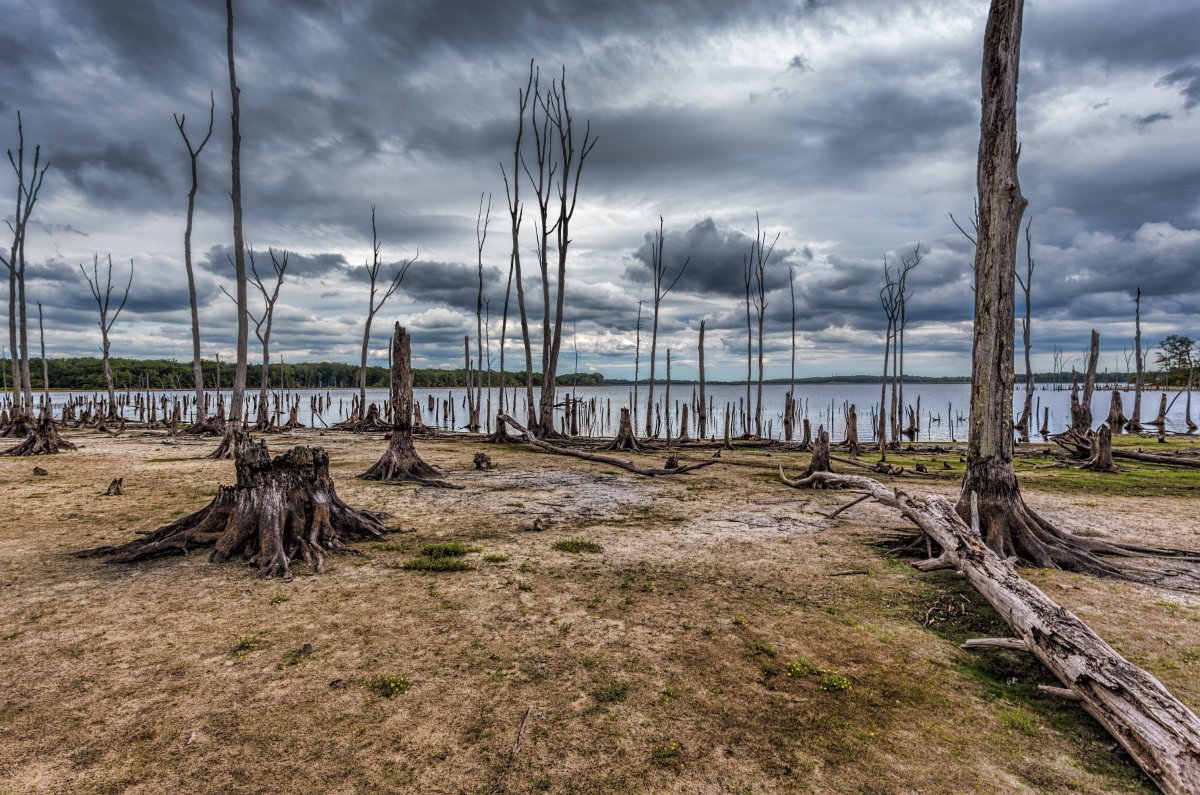Drought has prompted several cities across the U.S. to issue alerts about low water levels as the dry pattern is expected to continue.
The dry weather is contributing to worsening drought across the U.S. According to the most recent U.S. Drought Monitor map, more than 77 percent of the nation is considered abnormally dry, with 45 percent battling moderate drought, more than 17 percent struggling with severe drought, nearly 5 percent facing extreme drought and .63 percent plagued by exceptional drought. Drought increased across the U.S. in all categories over the last week, except for exceptional drought, which remained the same.
Earlier this week, dry weather prompted National Weather Service (NWS) meteorologists to issue special weather statements across the Midwest and Northeast regarding favorable wildfire conditions. The dry weather also has contributed to falling water levels at multiple lakes and reservoirs, spurring several cities to issue a call for citizens to reduce their water use.
For example, city officials in Hopkinton, Massachusetts, are asking citizens on the municipal water system to "refrain from any unnecessary water use."
"Groundwater is continuing to decline with the lack of rain causing pumping capacity to be cut back at our well sources," the alert said. "With a forecast for continued dry and above normal temperatures through the end of the month, this will continue to put a strain on the system. The low groundwater levels are also causing water to be pulled from further out in the aquifers, negatively affecting water quality causing more periodic discoloration."
New Jersey Governor Phil Murphy asked citizens to voluntarily conserve water amid moderate and severe drought across the state, spurring concerns that New York could soon follow suit.
Water levels at the Manasquan Reservoir in Monmouth County, New Jersey, have fallen to the point of exposing a dry lakebed around the edge of the lake.
"With no substantial rain expected for the foreseeable future, impacts from the drought are likely to expand," the NWS office in Mount Holly, New Jersey, posted on X, formerly Twitter. "Fortunately the growing season is ending, but drought can have impacts that spread well beyond agriculture."
In Oklahoma, officials are pulling water from Lake Canton to replenish the levels at Lake Hefner, which have dropped significantly due to "continued unseasonably warm and dry weather conditions," the city reported. Lake Hefner is the primary water source for Oklahoma City.
Dry weather also has led to low lake levels in Wichita Falls, Texas, where water levels at Lake Kickapoo and Lake Arrowhead have fallen below 65 percent, which prompted Stage 1 drought restrictions, Texoma's Homepage reported.
NWS meteorologist William Churchill told Newsweek that several inches of rain is in the forecast for parts of the Pacific Northwest later this week. Some parts of the Midwest, particularly around Chicago, could see light rain on Thursday, which will then move into the Northeast by the weekend, Churchill said.
Many other NWS offices are forecasting more dry weather for the coming week.
"The precipitation outlook for the rest of the month doesn't look promising for any measurable rainfall," the NWS office in Memphis posted on X. "This could become the all-time driest October on record for our climate sites."
"While October is typically one of our driest months of the year, we are on quite the pace with no rainfall so far this October in both Columbia and Augusta," the NWS office in Columbia, South Carolina, posted. "Since records started in Columbia (1887) and in Augusta (1871), we have never seen a completely dry calendar month."
Indianapolis also is experiencing a dry October.
"IND must receive at least 0.10" in the next 10 days or this month will be the driest October in the 154-year record," the NWS Indianapolis office posted.




















:quality(85):upscale()/2024/04/24/878/n/3019466/36c5693c662965c5d1ce91.72473705_.jpg)
 English (US) ·
English (US) ·